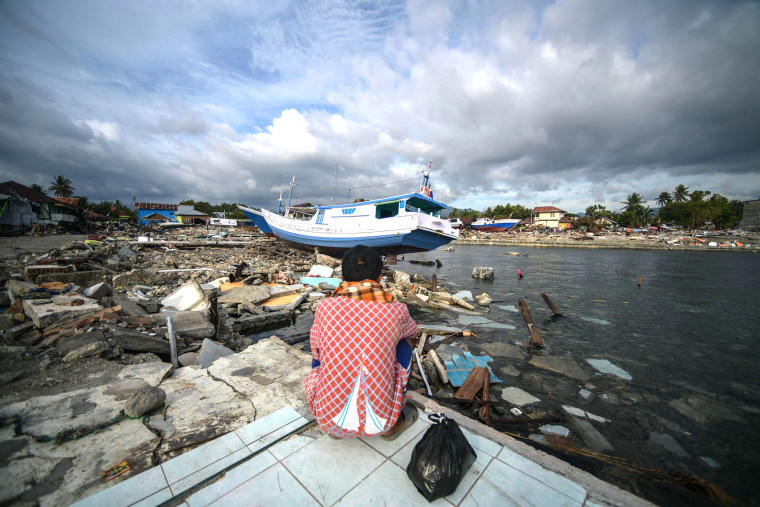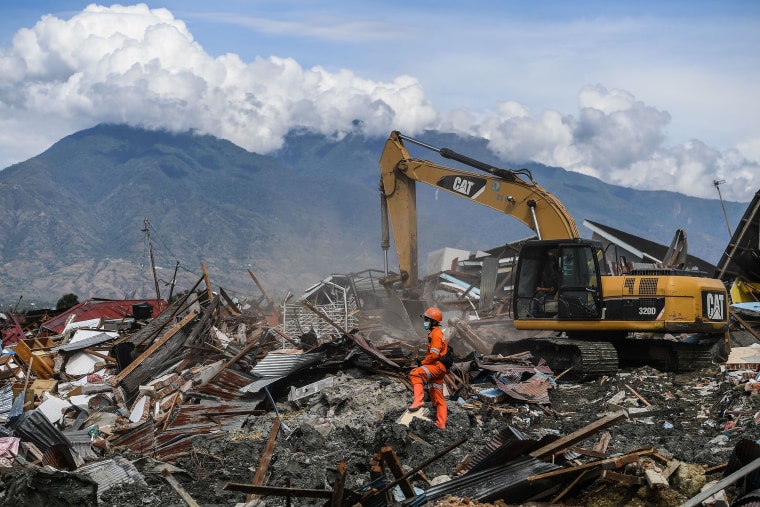Teams in the earthquake and tsunami-devastated city of Palu, Indonesia, dug through rubble and mud looking for bodies Monday as the death toll rose to nearly 2,000 with thousands more unaccounted for.
In the hard-hit neighborhoods of Petobo and Balaroa more than 3,000 homes were damaged or sucked into deep mud when the magnitude 7.5 quake turned loose, wet soil into quicksand-like mud on Sept. 28.
"Based on reports from village chiefs in Balaroa and Petobo, some 5,000 people have not been found. Our workers on the ground are trying to confirm this," disaster agency spokesman Sutopo Purwo Nugroho said Sunday at a news briefing in Jakarta, Indonesia's capital.
Search operations are scheduled to end on Thursday, and those unaccounted for will be declared missing and considered dead, Nugroho said. More than 8,000 injured or vulnerable residents have been flown or shipped out of Palu, while others could have left by land, he said.
Children on Monday returned to damaged schools where they helped clean and assess who was still missing. Across the city, nine schools were destroyed, 22 teachers were killed and 14 were missing, the disaster agency said.
At the SMP Negeri 15 Palu middle school, fewer than 50 of its 697 students showed up, Reuters reported.
"Classes haven't started. We're only collecting data to find out how many students are safe," said school principal Abdul Rashid, who was aware of four students killed in the quake.

"I'm still waiting for the Ministry of Education to give us instructions on when to begin classes. For now, I don't think we're ready. Many children are traumatized and frightened."
In some of the areas affected by the disaster, life is starting to return to normal, head of the National Board for Disaster Management Willem Rampangilei said. Immediate food and water needs have been met, and the local government has started to function again.
The U.S. has sent a team of disaster experts to the area and said it will send 2,210 rolls of heavy-duty plastic sheeting from its emergency warehouses in Dubai and Malaysia, enough to provide for the emergency shelter needs of 110,500 people.
Palu is the main city on Sulawesi, one of Indonesia’s larger islands. More than 250 million people live in this archipelago nation, which has been repeatedly struck by quakes and tsunamis.

The national disaster agency says more than 148 million Indonesians are at risk in earthquake-prone areas and 3.8 million people also face danger from tsunamis, with at most a 40 minute window for warning people to flee.
After this most recent quake, however, the three tsunami waves swiftly struck Palu, within just 15 minutes of the quake.
In 2004, a quake off the island of Sumatra triggered a tsunami across the Indian Ocean that killed 226,000 people in 13 countries, including more than 120,000 in Indonesia.
